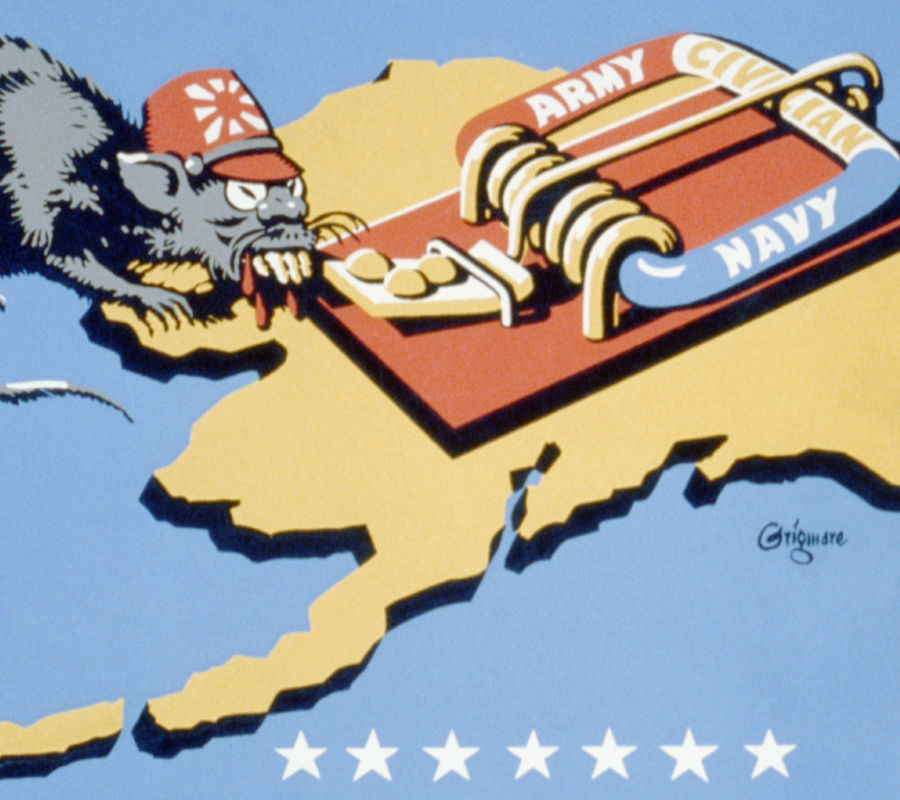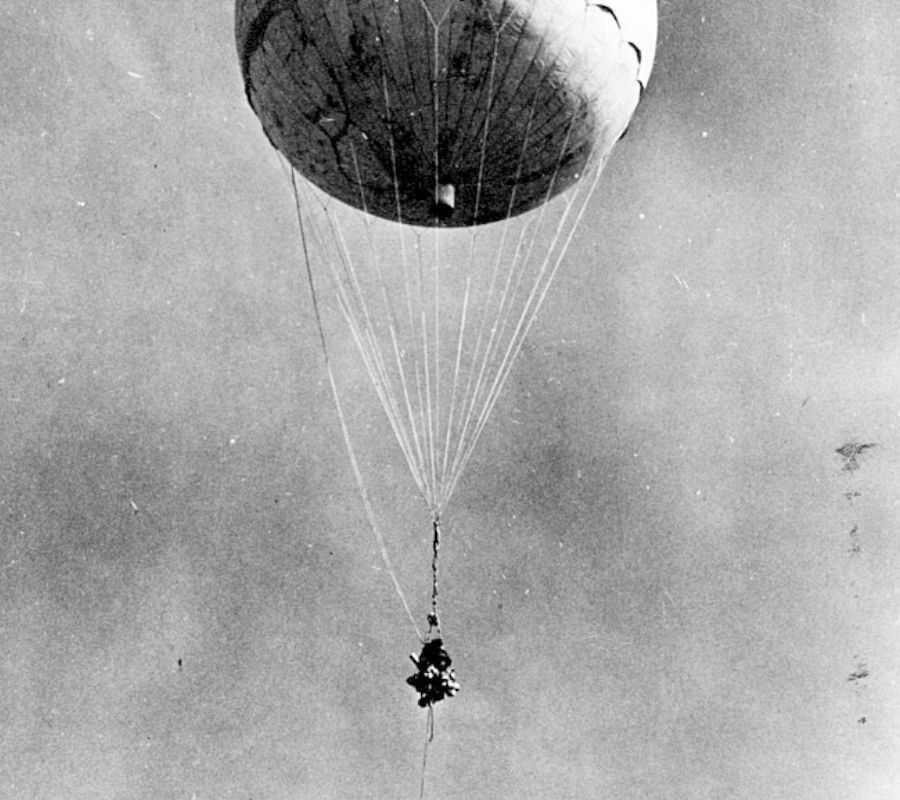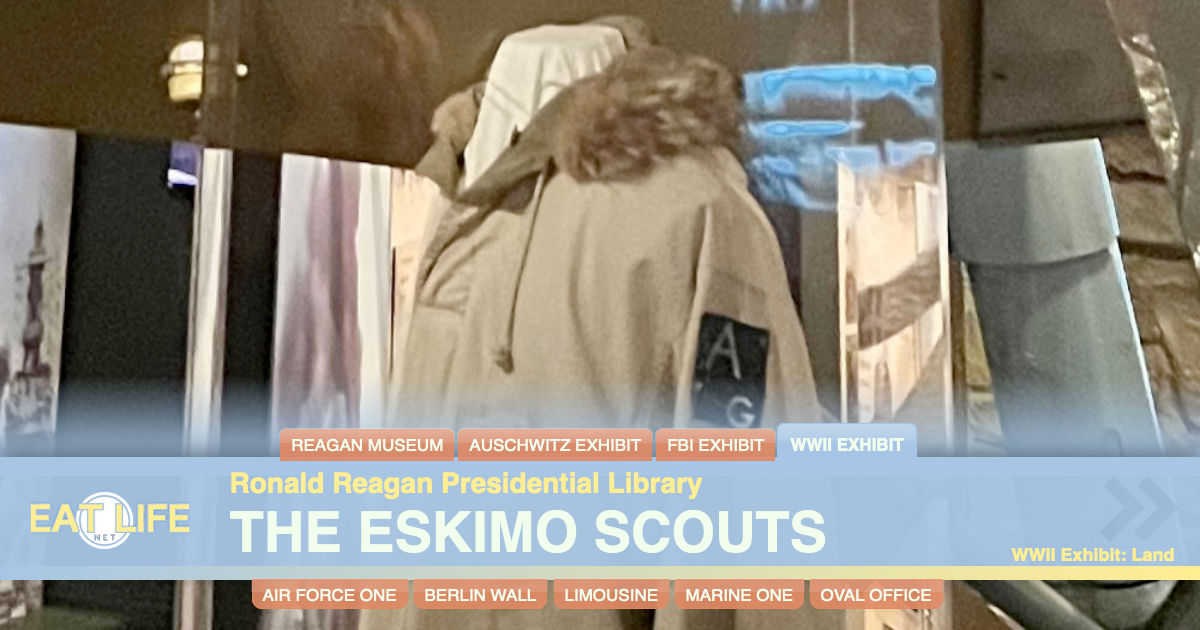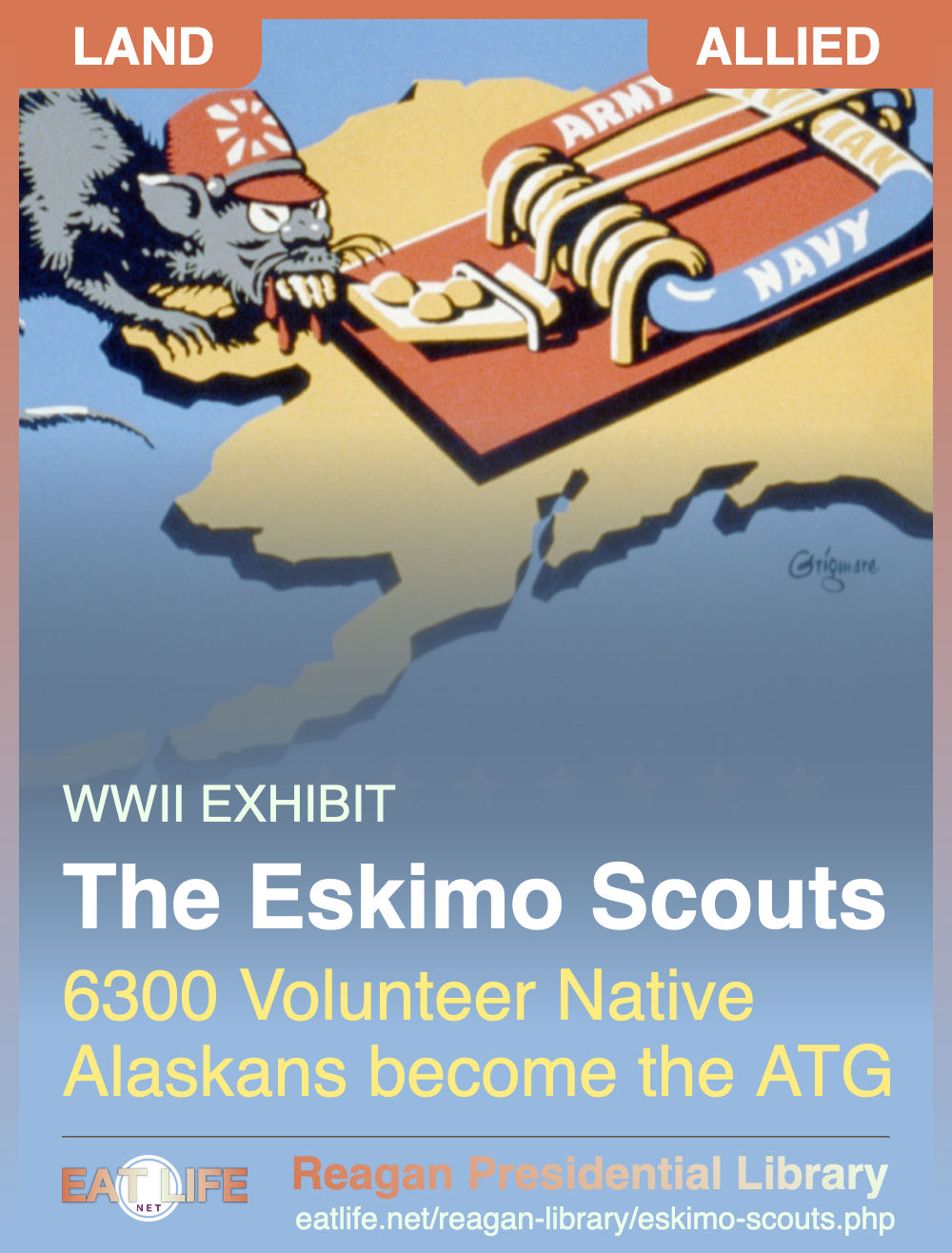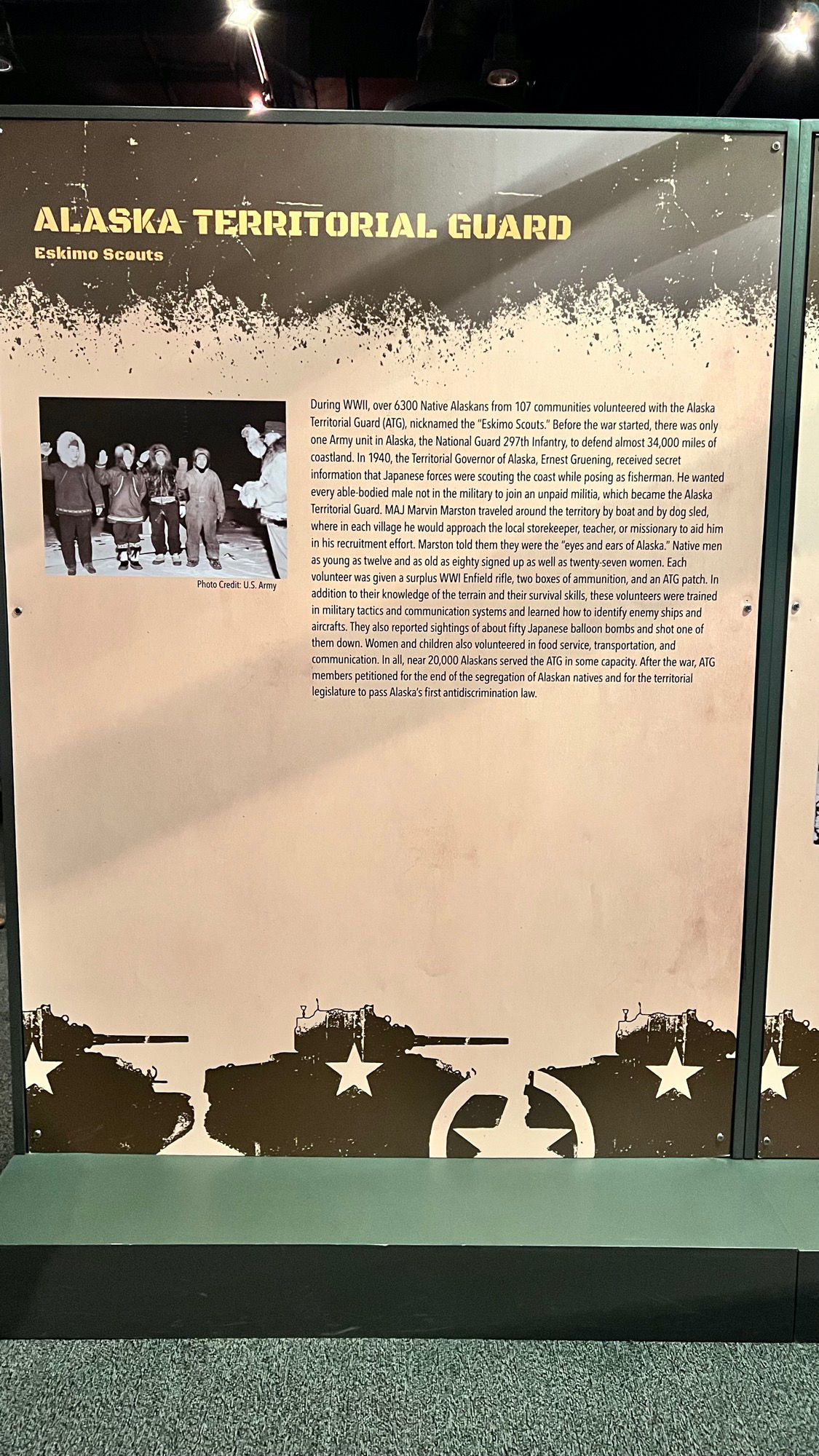
Eskimo Scouts
During WWII, over 6300 Native Alaskans from 107 communities volunteered with the Alaska Territorial Guard (ATG), nicknamed the "Eskimo Scouts." Before the war started, there was only one Army unit in Alaska, the National Guard 297th Infantry, to defend almost 34,000 miles of coast land.
In 1940, the Territorial Governor of Alaska, Ernest Gruening, received secret information that Japanese forces were scouting the coast while posing as fisherman. He wanted every able-bodied male not in the military to join an unpaid militia, which became the Alaska Territorial Guard. MAJ Marvin Marston traveled around the territory by boat and by dog sled, where in each village he would approach the local storekeeper, teacher, or missionary to aid him in his recruitment effort. Marston told them they were the "eyes and ears of Alaska."
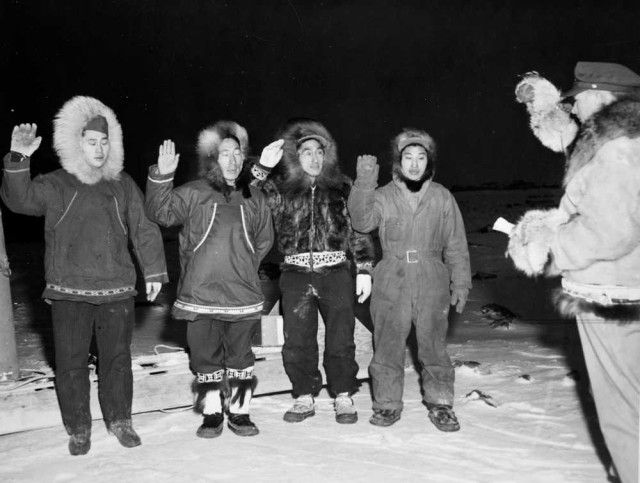 Native men as young as twelve and as old as eighty signed up as well as twenty-seven women.
Each volunteer was given a surplus WWI Enfield rifle, two boxes of ammunition, and an AT patch.
In addition to their knowledge of the terrain and their survival skills, these volunteers were trained in military tactics and communication systems and learned how to identify enemy ships and aircraft.
They also reported sightings of about fifty Japanese balloon bombs and shot one of them down. [https://www.eatlife.net/wwii/fu-go.php]
Women and children also volunteered in food service, transportation, and communication.
Native men as young as twelve and as old as eighty signed up as well as twenty-seven women.
Each volunteer was given a surplus WWI Enfield rifle, two boxes of ammunition, and an AT patch.
In addition to their knowledge of the terrain and their survival skills, these volunteers were trained in military tactics and communication systems and learned how to identify enemy ships and aircraft.
They also reported sightings of about fifty Japanese balloon bombs and shot one of them down. [https://www.eatlife.net/wwii/fu-go.php]
Women and children also volunteered in food service, transportation, and communication.
In all, near 20,000 Alaskans served the ATG in some capacity. After the war, AIG members petitioned for the end of the segregation of Alaskan natives and for the territorial legislature to pass Alaska's first anti-discrimination law.
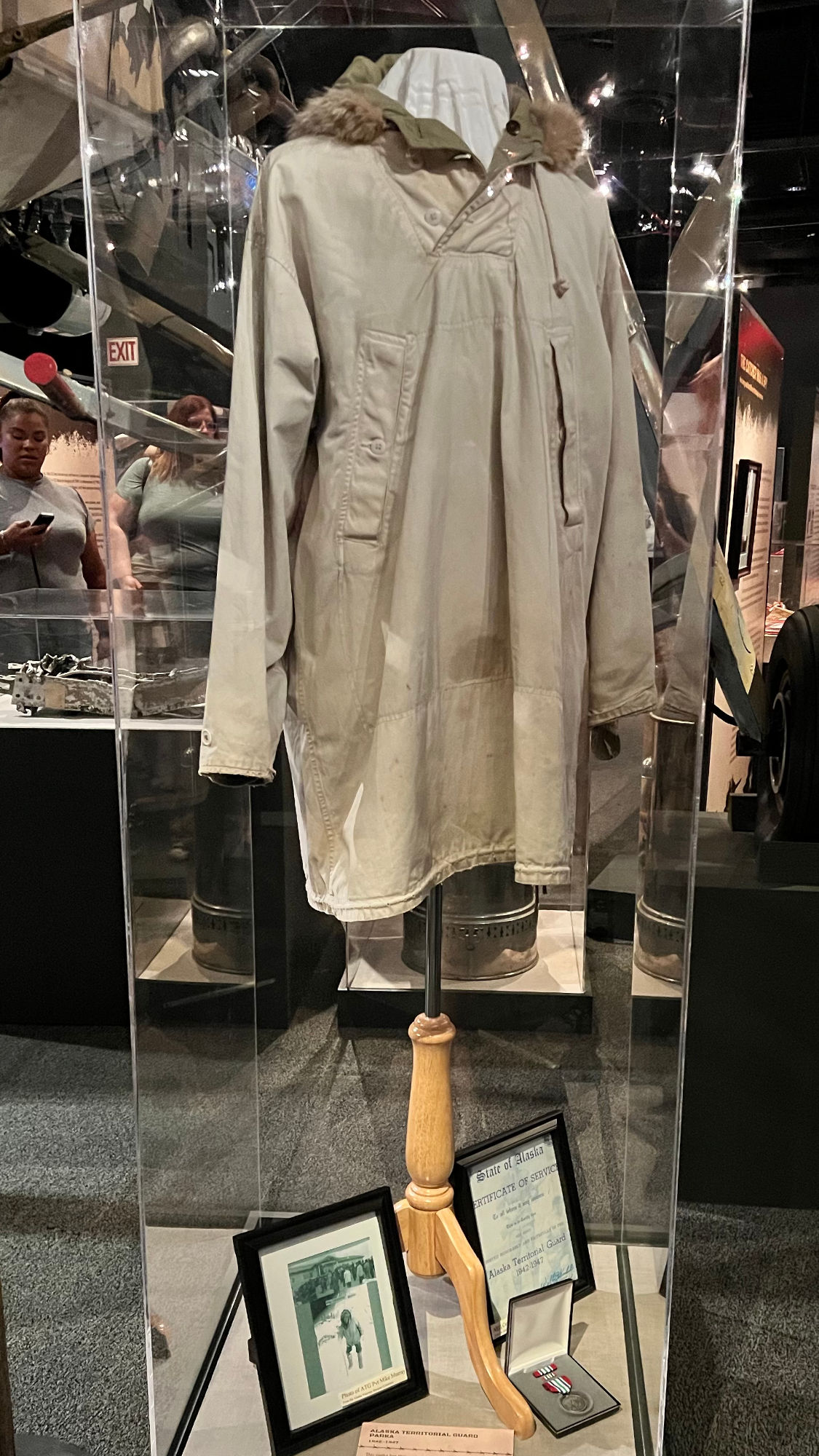
1942-1946
This parka has the regional ATG Patch on the shoulder, which features the Big Dipper and the North Star similar to the flag of Alaska.
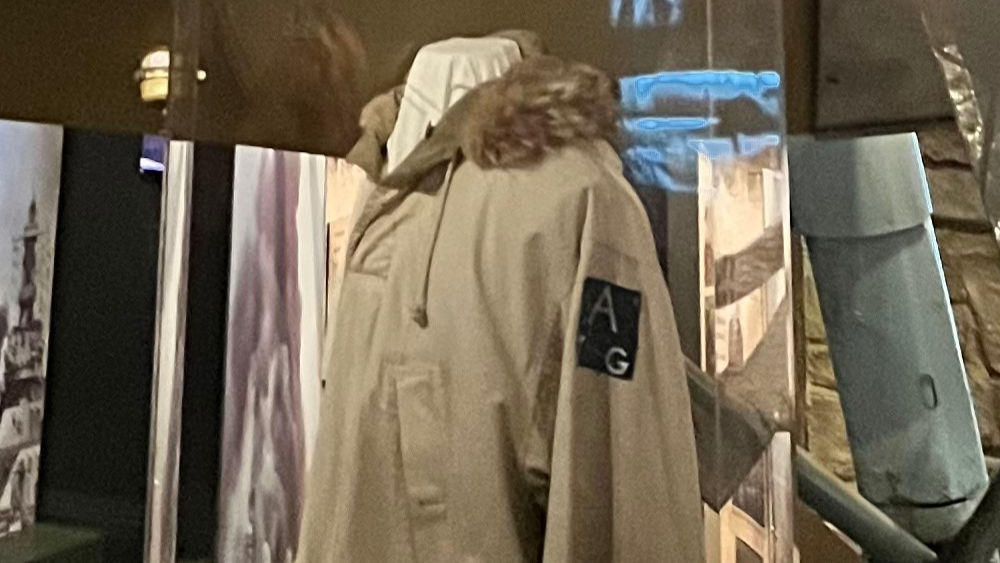
How Native Americans Protected Alaska During WWII
After the Japanese invaded the Aleutian Islands, Indigenous volunteers helped form the Alaska Territorial Guard.History.comJune of 1942
Six months after Pearl Harbor formally jolted the U.S. into World War II, the Japanese mounted another surprise bombing attack-this time, on Dutch Harbor in the remote Aleutian Islands of Alaska. In the brief ensuing invasion, Japanese naval forces occupied the islands of Attu and Kiska, the first occupation by foreign forces in U.S. territory since the War of 1812.After U.S. forces drove out the Japanese, it became clear to military leadership that the vast and forbidding 6,640-mile coastline of northwest Alaska needed to be patrolled for the duration of the war. Turning to the Indigenous communities for help, they soon found volunteers from local villages willing to join the newly formed Alaska Territorial Guard (ATG), also known as the “Eskimo Scouts.”
In addition to a number of Euro-Americans, these recruits came largely from the Tlingit, Aleut, Tsimshian, Haida and Athabascan communities, and particularly, from the Yup'ik and Inupiaq people living along the Bering Sea and Arctic coastline. The all-volunteer corps knew the land and were accustomed to surviving in harsh winter conditions.
More than 6,300 Indigenous men and women, ages 12 to 80, joined the Alaska Territorial Guard. They were given a single rifle each, a uniform and army training manual, as well as snowshoes and other gear. These unpaid sentries learned military drills and how to operate communications systems. They became the eyes and ears of the U.S. military in western Alaska.
WIKIPEDIAThe Alaska Territorial Guard (ATG)
More Commonly Known as The Eskimo Scouts
was a military reserve force component of the US Army, organized in 1942 in response to attacks on United States soil in Hawaii and occupation of parts of Alaska by Japan during World War II. The ATG operated until 1947. 6,368 volunteers who served without pay were enrolled from 107 communities throughout Alaska in addition to a paid staff of 21, according to an official roster.The ATG brought together for the first time into a joint effort members of these ethnic groups: Aleut, Athabaskan, White, Inupiaq, Haida, Tlingit, Tsimshian, Yupik, and most likely others. In later years, all members of some native units scored expert sharpshooter rankings. Among the 27 or more women members were at least one whose riflery skills exceeded the men. The ages of members at enrollment ranged from 80 years old to as young as twelve (both extremes occurring mostly in sparsely populated areas). As volunteers, the Alaska Territorial Guard members were those who were too young or too old to be eligible for conscription during the World War II.
One first-hand estimate states that around 20,000 Alaskans participated, officially or otherwise, in ATG reconnaissance or support activities.
The ATG served many vital strategic purposes to the entire Allied effort during World War II:
- They safeguarded the only source of the strategic metal platinum in the Western Hemisphere against Japanese attack.
- They secured the terrain around the vital Lend-Lease air route between the United States and the Soviet Union.
- They placed and maintained survival caches primarily along transportation corridors and coastal regions.
In addition to official duties, ATG members are noted for actively and successfully promoting racial integration within US Armed Forces, and racial equality within the communities they protected.
Several former members of the ATG were instrumental in achieving Alaska Statehood in 1959, as members of the Alaska Statehood Committee and/or delegates to the Alaska Constitutional Convention.
In 2000 all ATG members were granted US veteran status by law, acknowledging the contribution of the ATG, some of whose members are still living. But efforts to find the surviving ATG members and assist them through the application process are difficult due to lack of written records, oral cultures, lack of trained staff, passage of time, and unclear bureaucracies and advocates.
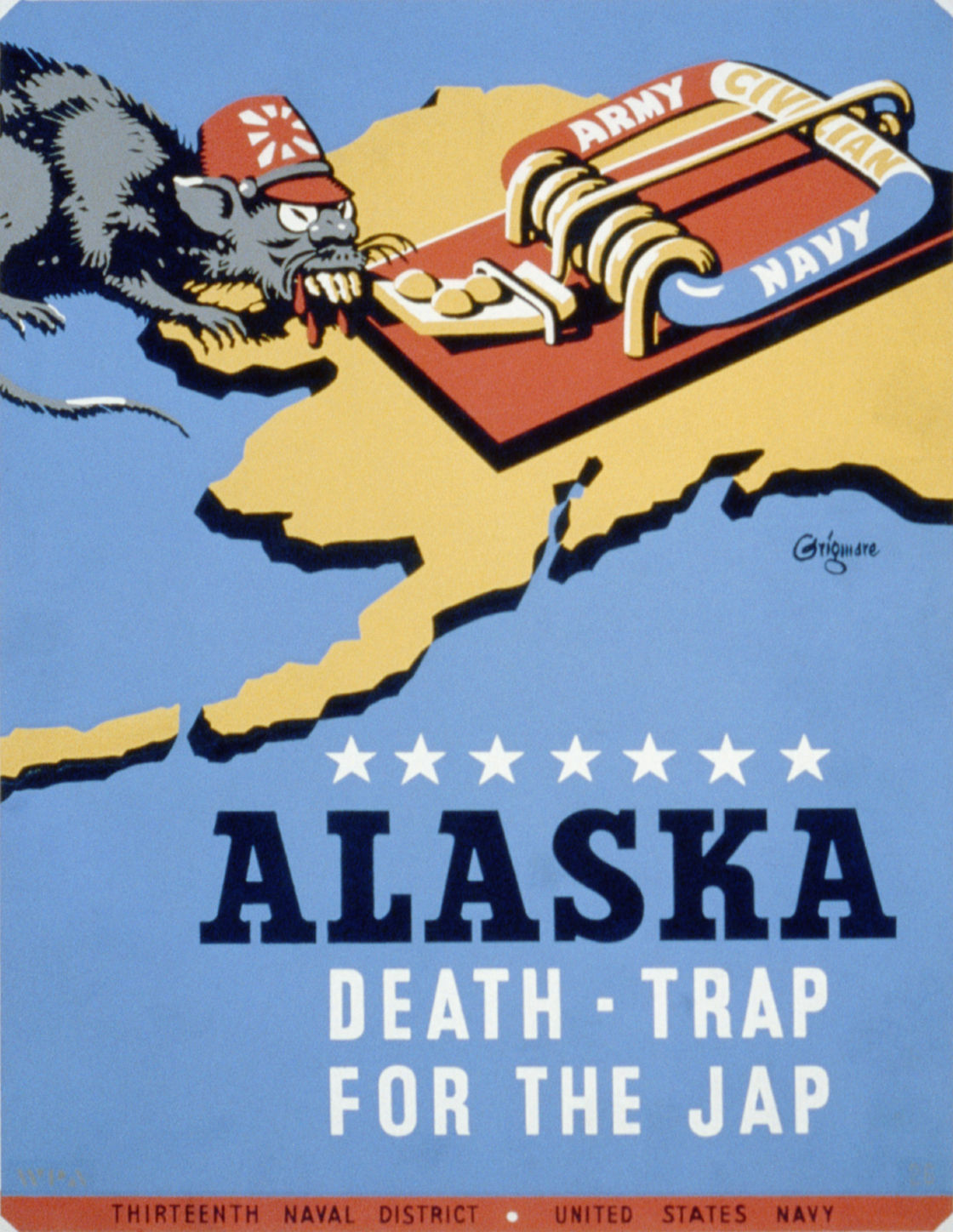 U.S. Government poster from World War II
U.S. Government poster from World War II
TIMELINE: ATG RELATED EVENTS 1931 The Imperial Japanese Army sets a false pretense and uses it to invade northeast China, confirming its intent to dominate the Asia-Pacific. 1935 Billy Mitchell declares Alaska's strategically important, goes unheeded by US military leadership. Earlier, Billy Mitchell was court-martialled for advocating the value of military air power. 1937 The US Army officially declines a request for an air base in Alaska. 1939 Ernest Gruening is appointed Alaska territorial governor by his friend, US President Franklin D Roosevelt (FDR). Gruening gets four National Guard units organized in the Alaska Territory. 1940, March A bill for an air base in Alaska fails to pass in the US House. 1940, April Hitler invades Norway and Denmark (whose territory includes Greenland). 1940, May US Congress approves an air base in Alaska. Air raids from northern Alaska would help counter any Nazi bases built in Greenland, as a polar projection map will attest). 1941, March Marvin Marston is commissioned at the Pentagon as a major with orders to Alaska. 1941. Mid Ernest Gruening seeks a new guard organization for Alaska, anticipating the reassignment of the Alaska National Guard. 1941, August The US Army reassigns Alaska National Guard soldiers away from Alaska, leaving the state with no military reserves or Home Guard. 1941, December 7 The Imperial Japanese Navy bombs the US at Pearl Harbor, Hawaii, sinking most of the US Pacific Fleet. Soldiers' families are ordered evacuated from Alaska. 1942, Feb-March A Japanese Navy reconnaissance unit is filmed making detailed surveys of the Alaska coastline. Japanese crewmen (enemy combatants) came ashore and questioned the locals about the area. 1942, March Major Marston realizes the practicality of a 'tundra army' to defend the entire Alaskan coast. 1942, March Japanese aircraft are sighted over Saint Lawrence Island. 1942, Mar/April Major Marston presents a formal plan for the defense of Alaska shoreline. 1942, June Japanese forces raid Dutch Harbor and take control of Attu, Kiska and Adak. 1942, June The Alaska Command assigns Major Marvin Marston and Captain Carl Schreibner as military aides to Governor Gruening. Gruening and Marston soon embark on a trip to form the first units of the new Alaska Territorial Guard. 1942 Major Marston (by now known as "Muktuk" after an eating contest with a village headman) opts to make an ATG recruiting run by dogsled when a promised plane fails to show up. 1943, January Major Marston completes his circuit around the Seward Peninsula by dogsled during the coldest winter in 25 years. Living by native methods, he continues to travel the Arctic through 1945. 1945, August VJ Day, The Empire of Japan surrenders. 1947 The Alaska Territorial Guard is disbanded. 1966 The State of Alaska awards a medal to all ATG members. 2000 US Senator Ted Stevens' (R-AK) bill granting ATG members full veteran status is passed into law. Little is done to find and inform surviving ATG members and spouses, many of whom relocated numerous times in the intervening 53 years. 2003 Robert A "Bob" Goodman, Colonel (Retired), Alaska Air National Guard, takes up the task of finding as many former ATG members as possible, to help them apply for recognition as US veterans. 2006 Bob Goodman founds the Alaska Territorial Guard Organization, a 501(c)(3) non-profit, to support his efforts on behalf of all former ATG members. To date, they have found and helped gain approval for about 150 ATG veterans. WIKIPEDIA
